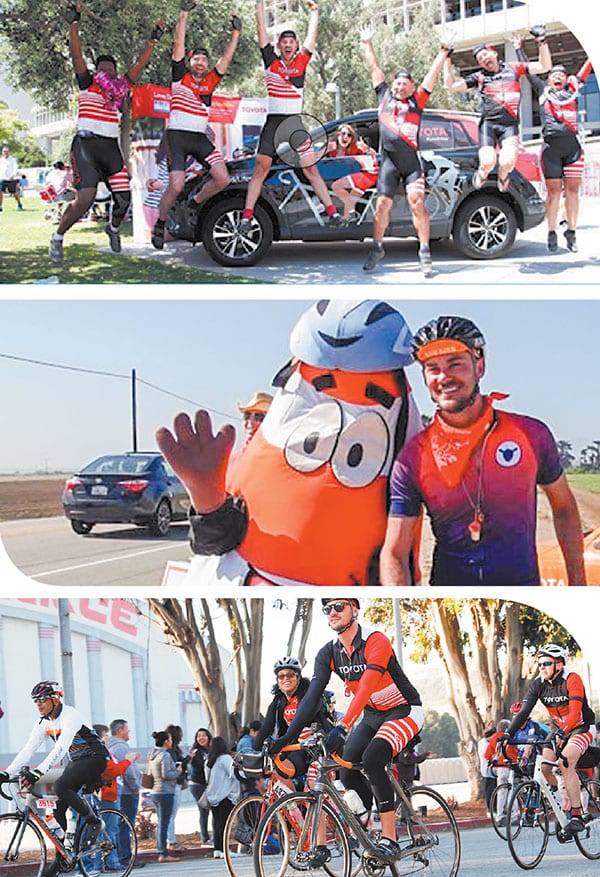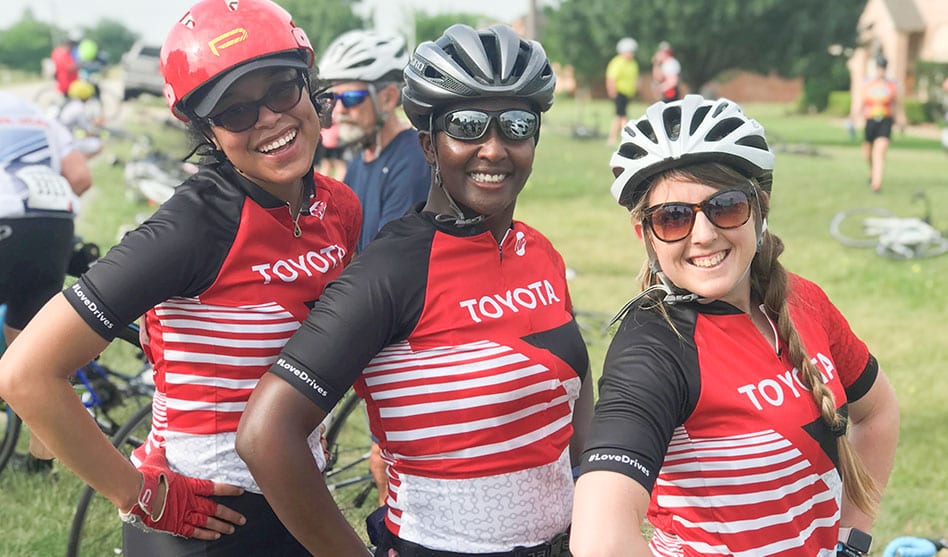Wendy Walker and photos of the team .(Courtesy Ryan Hines)
Wendy Walker said she participated so she could give something back to agencies like those that helped her through her brother’s final illness
DAVID TAFFET | Senior Staff Writer
taffet@dallasvoice.com
Wendy Walker decided to ride in California’s AIDS Life Cycle to give something back to AIDS agencies like the ones who were so helpful when her brother Danny died of AIDS complications in 2005.
She recalled finding out about his illness: “We didn’t find out until really late,” she said.
He’d get lost while driving and would call for help, she said. He started losing weight and developed sores all over his body. That was only about 10 months before he died.
“We knew something was wrong and asked,” Walker said. “He said everything was OK.”
Danny had never been tested for HIV. Finally he went into the hospital.
“The doctors didn’t give us a prognosis,” she said. But they sent him home with medication. So Walker contacted an AIDS service organization called House of Ruth in her hometown of Louisville, where they lived at the time. A staff member visited Danny and told Walker she thought he had about eight weeks to live.
Danny was active in his Baptist church. He had been married and had two daughters. Then he got divorced and came out. Walker said he lived a conflicted life in a world where people didn’t talk about HIV.
“For a long time, I wanted a way to give back to the agencies that support people affected by AIDS and who helped the families,” she said. “When I found out Toyota had a team, I signed up immediately.”

Wendy Walker
Building a team
Toyota has been a sponsor of AIDS Life Cycle for four years.
Ryan Hines moved with Toyota from California to Texas last year. “I was hired by Toyota to manage this sponsorship,” he said.
He became a cyclist in 2017 and, after moving to Dallas, decided to see if other employees would be interested in forming a team to go to California and participate in the AIDS Life Cycle. For 2018, nine people participated as cyclists and one as a roadie, the people who pack up camp and move to the next site and staff rest stops along the way.
Not all of the 10 Toyota participants are Dallas-based. “A lot of us met for the first time on that Saturday before the ride,” Hines said.
AIDS Life Cycle celebrated its 25th anniversary this year. The seven-day San Francisco-to-Los Angeles ride was founded by the same team that created the Houston-to-Dallas AIDS ride in the late 1990s. Like the Texas ride, the California event broke away from that founding company and was taken over by its beneficiary organizations.
For a number of years, the Texas ride remained profitable, but the number of riders dwindled and the event became less profitable. Unlike the Dallas ride, the California event has remained wildly popular.
This year’s 560-mile ride brought in $16.6 million. Participants each had to raise $3,000. In addition to the Toyota corporate donation, this year’s team raised more than $46,000 — $16,000 above what was required of the 10-person team.
Hines said team members raised quite a bit of money through social media. As a team, they sold $4,000 in Toyota cycling gear.
On a Facebook Live event, Hines raised $1,200 for the team in two hours. Broadcasting from Toyota headquarters’ spin center, he promised to continue peddling an additional amount of time for each pledge that came in. Every time he thought he was about done, someone made another donation. Nothing brings in money like friends laughing at you while seeing you suffer, he explained.
 The night before the ride, the team had passed its original goal of $40,000. Toyota matches to some late donations brought them up to the $46,000 final total.
The night before the ride, the team had passed its original goal of $40,000. Toyota matches to some late donations brought them up to the $46,000 final total.
Hines said he began his training in January participating in rally and big group rides that varied from 40 to 80 miles. Spin classes and cross training, especially on rainy weekends, completed his preparation to ride.
Not everyone on the Toyota team prepared as diligently. Half the team joined just two months before the ride began.
Training in Texas doesn’t completely prepare someone for the California ride, however. Hines did one training ride in the hilly country around Tyler, but part of AIDS Life Cycle is along the mountain cliffs of the Pacific Coast Highway.
“The ride is truly breathtaking,” Hines said.
The longest day — Day 2 at 109 miles — had the lowest elevation. The shortest — just 41 miles — was quite hilly.
In addition to varied terrain and gorgeous scenery, AIDS Life Cycle had several things the Texas ride never had. The last night, the camping was on the beach at San Buenaventura State Park. Pit stops included one at a strawberry field and another among fresh artichokes.
Hines said plans are already underway for Toyota to sponsor next year’s ride. This year, the company provided 70 loaner vehicles. Next year, he said, they hope to add some of the trucks needed to haul equipment.
The 2019 team is shaping up as well with several of this year’s participants pledging to return and new riders already signed up.












